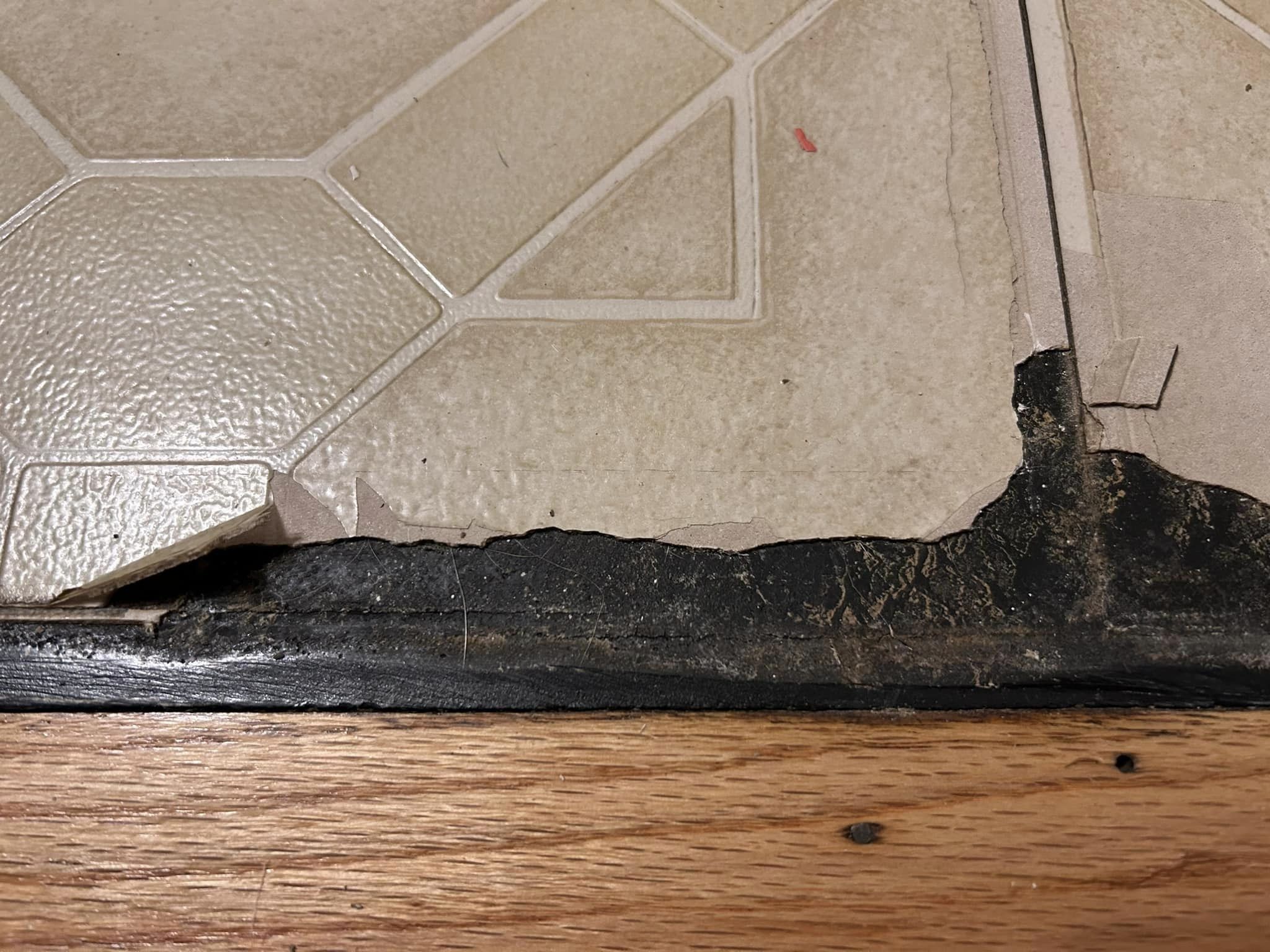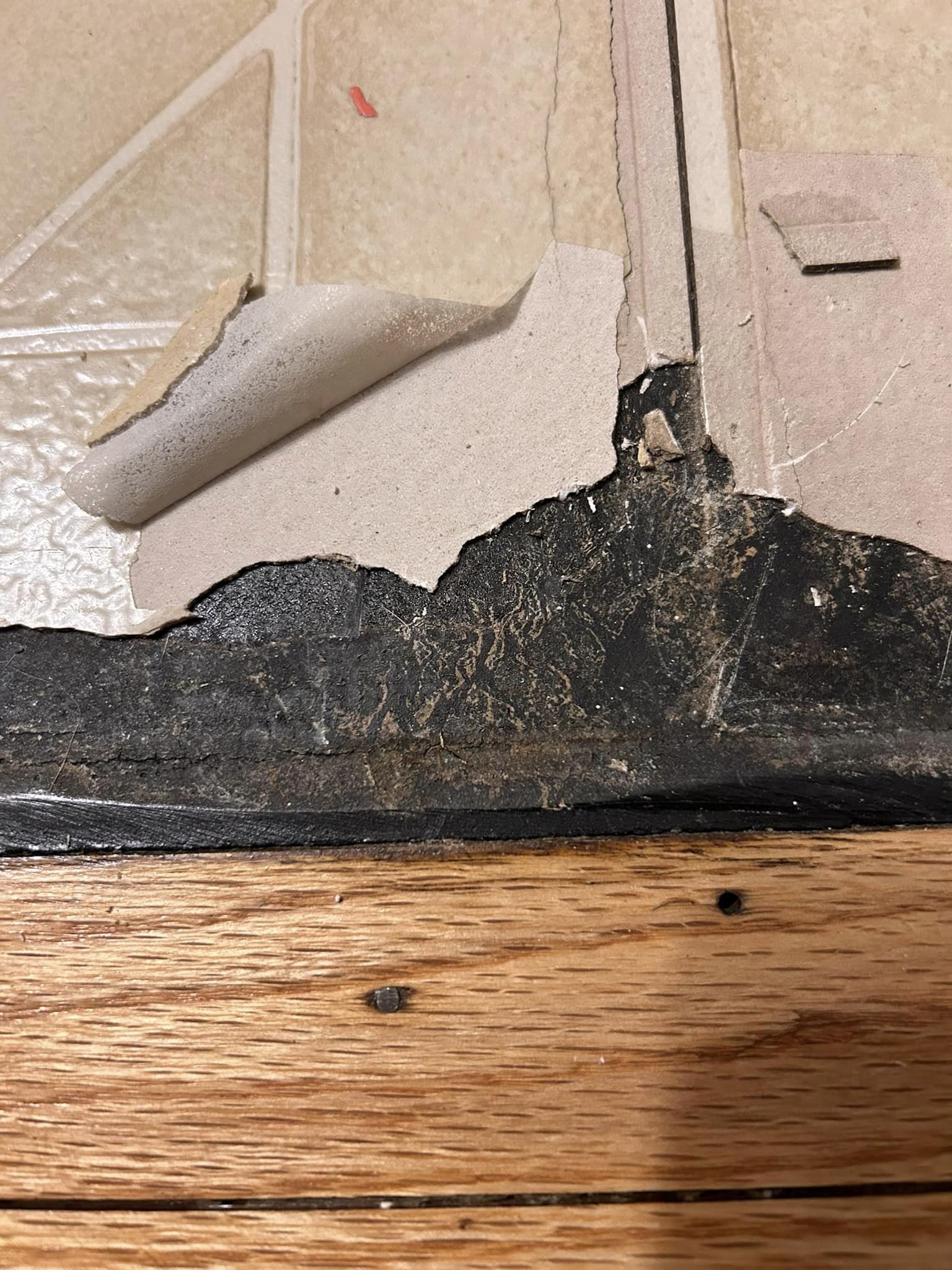Can anyone identify the black layer on my 40-year-old bathroom floor and advise on whether it should be removed before installing new tile?
9 months ago
Last Updated: September 9, 2024
I’m looking to tear up the ancient bathroom floor in my house, which I think is about 40 years old (the linoleum, not the wood flooring). The house was built in ’48 but I’m not sure what has been changed since then. Can anyone help me figure out what this black layer is and if it should be kept? It looks pretty sturdy, and I have no idea what’s under it. I’m thinking of putting in new tile. Any advice or info would be greatly appreciated!


It’s possible that the adhesive is “black mastic,” which often contains asbestos. It might be best to remove the subfloor, or if that’s not an option, consider applying self-leveling floor cement.
After doing more research, I found out that it’s not a good idea to use self leveling cement on black mastic. Instead, you can use paint primers to “encapsulate” it before leveling the floor with your preferred method.
If you do decide to remove the subfloor, make sure to keep it damp to minimize dust.
Get it checked for asbestos. If it turns out to be asbestos and you can’t afford removal, you may be able to install new subfloor over it.
Try using a heat gun and proceed slowly.
That seems to be more of a flooring issue, or sometimes what appears to be tar paper was utilized. The best course of action is to remove all of it down to the wood.